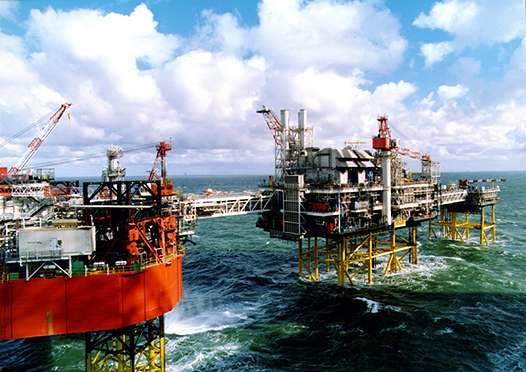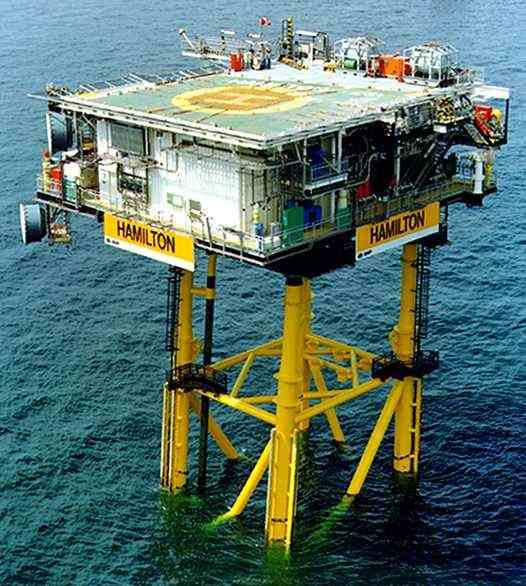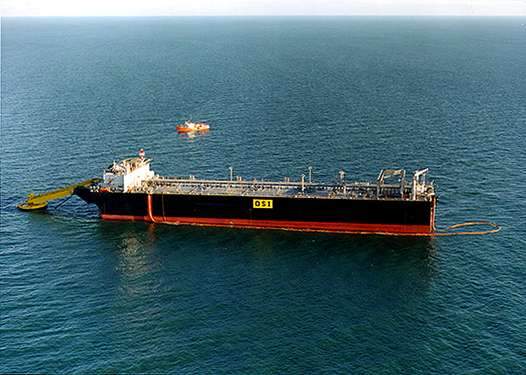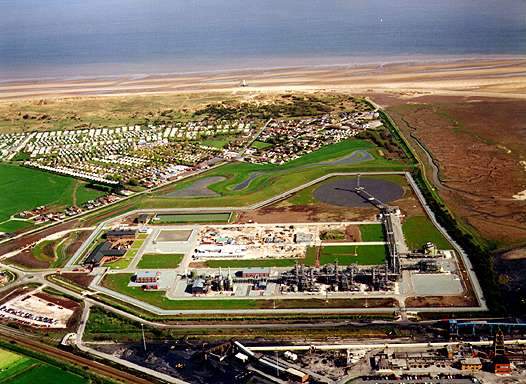The Liverpool Bay Development is BHP Petroleum’s largest global single project. It comprises four oil and gas fields, together with significant offshore and onshore facilities for extracting, transporting and processing the reserves.
Offshore operations are centred on the Douglas complex – a three-platform facility that monitors and controls the development’s three unmanned satellite platforms at Lennox, Hamilton and Hamilton North. Oil and gas from all four fields are received at Douglas.
The oil produced from the Lennox and Douglas fields is then processed, blended and sent through a 20km pipeline to the offshore storage installation, before being loaded into tankers for worldwide export .
Gas extracted from Hamilton and Hamilton North, as well as from Lennox, is part-processed on Douglas before it travels via a 34km pipeline to BHP’s state-of-the-art gas terminal at Point of Ayr on the North Wales coast.
The total recoverable reserves in Liverpool Bay are estimated to be in excess of 150 million barrels of oil and 1.2 trillion cubic feet of gas. With peak oil production expected to average 70,000 barrels per day, and a peak gas capacity of 300 million ft³ per day, the life of the development is projected to be at least 20 years.
Douglas Complex
The three-platform Douglas Complex, located 24km from the North Wales coast, is the nerve centre of the offshore development. It is manned around-the-clock, controlling and monitoring activities in all four Liverpool Bay fields from a central control room located on the accommodation platform.
Alongside the accommodation platform, linked by a 46m-long bridge, is the central processing platform, which has eight legs and weighs 10,715t. This processes all of the oil and gas produced in the fields. The processing platform also has two massive 42MW gas turbine generators, which provide power for all of the offshore units.
The third platform in the Douglas complex is the wellhead tower, where the fluids are received before they are piped across a 50m bridge, to the central processing platform.
Like the satellite platforms in Liverpool Bay, Douglas is protected by a 500m shipping exclusion zone, which is constantly monitored by radar and patrolled 24 hours a day, by one of the development’s three support vessels.
Satellite platforms
Lennox, Hamilton and Hamilton North are satellite production platforms, linked by pipeline and communications systems to the Douglas Complex.
In order to reduce their size and visual impact, the three platforms are unmanned. Despite this, the regular servicing of these facilities still takes place due to the Irish Sea Pioneer, which is a mobile, self-elevating operations support vessel (OSV), which moves around the development to carry out testing, inspection and maintenance.
Once in position alongside a platform, the OSV lowers its four giant legs onto the sea bed and then lifts itself out of the water to the level of the platform deck.
A bridge link is then created between the satellite and the OSV to allow engineers and technicians to carry out their work.
The offshore storage installation
All of the oil produced in Liverpool Bay is sent from Douglas to the development’s offshore storage installation – an 870,000bbl-capacity tanker, which is permanently moored outside shipping lanes in the Irish Sea.
Designed with safety as a key priority, the OSI is a double-sided vessel, with its ten cargo tanks flanked by segregated 4.8m-wide seawater ballast tanks. As well as being manned around-the-clock, it is protected by an 800m exclusion zone, which is continuously monitored by radar and patrolled 24 hours a day by a high-powered support boat.








